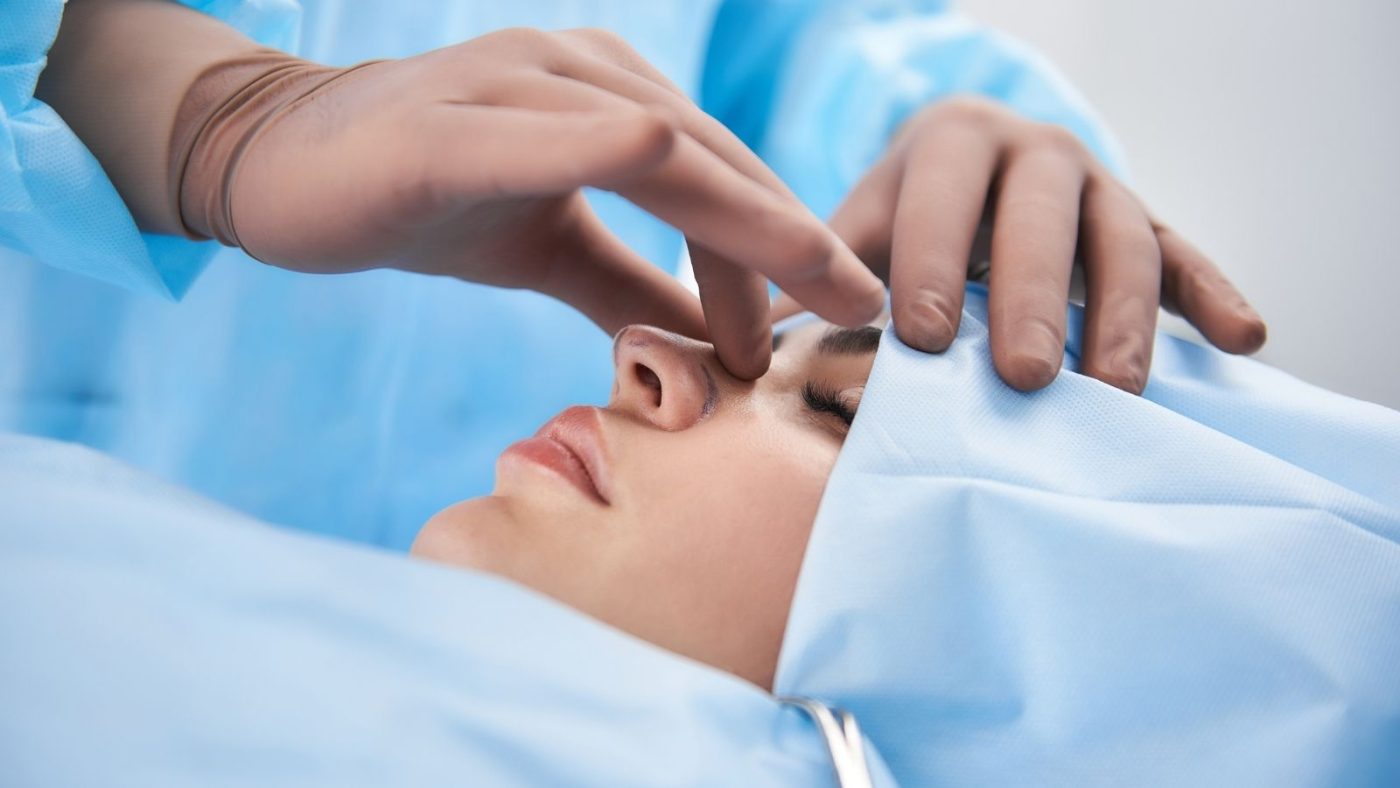Eines der Probleme, die nach einer Nasenoperation auftreten können, ist ein Nasenkollaps. Dies kann zu ästhetischen und funktionellen Problemen führen. Daher ist ein schneller und wirksamer Eingriff erforderlich. Die Patienten sollten sich sofort an ihren Chirurgen wenden, wenn sie einen Kollaps bemerken. Die Revisionsrhinoplastik ist eine häufig angewandte Lösungsmethode. Bei diesem Verfahren werden strukturelle Probleme durch Knorpeltransplantate aus anderen Körperteilen gelöst. Alternativ dazu können auch injizierbare Füllstoffe eine vorübergehende Lösung bieten. Die Wahl dieser Methoden sollte jedoch vom Grad des Kollapses abhängig gemacht werden.
Was sind die Symptome eines Nasenkollapses nach einer Nasenoperation?
Die Symptome eines Kollapses nach einer Nasenoperation sind vielfältig, und es ist wichtig, dass die Patienten diesen Zustand erkennen. Zunächst einmal sollten eine verstopfte Nase und Atembeschwerden in Betracht gezogen werden. Der Patient hat möglicherweise Schwierigkeiten, beim Atmen Luft durch die Nase zu bekommen. Dies wird noch deutlicher, wenn die Nasenlöcher nach innen klappen. Dieser Zustand zeigt sich vor allem beim tiefen Atmen oder bei körperlicher Aktivität.
Veränderungen der Nasenstruktur:
- Eine Deformität in Form eines umgekehrten V ist ein häufiger Zustand nach einer Operation. Auf dem Nasenrücken kommt es zu einem umgekehrten V-förmigen Kollaps.
- Die Nasenlöcher können beim Atmen nach innen klappen.
Dieser Kollaps, der zu den schwerwiegenden strukturellen Störungen gehört, die eine Revisionsoperation erfordern, kann durch eine unzureichende intranasale Klappe verursacht werden. Eine der Möglichkeiten, dies festzustellen, ist das Cottle-Manöver. Wenn der Patient dieses Manöver durchführt und seine Wangen zur Seite zieht, kann es sich bei einer deutlichen Verbesserung des Luftstroms um einen Kollaps der inneren Nasenklappe handeln. Die Breathe Right-Strips werden ebenfalls als Testinstrument verwendet. Die Streifen lindern die Symptome, wenn sie in die Nase eingeführt werden.
Patienten mit Nasenkollaps leiden häufig unter Schnarchen und Schlafstörungen. Ein verminderter Luftstrom durch die Nasengänge führt zu Schnarchen oder anderen Atemproblemen. Eine dauerhafte Nasenverstopfung ist ein Gefühl der Verstopfung, das trotz typischer Behandlungen anhält und eher auf ein strukturelles Problem hinweist.
Wie behandelt man einen Nasenkollaps nach einer Nasenkorrektur?
Der Nasenkollaps nach einer Nasenkorrektur kann mit verschiedenen Behandlungsmethoden behandelt werden. Zunächst werden die nicht-chirurgischen Optionen bewertet. Zu diesen Methoden, die in leichten Fällen wirksam sind, gehören;
- Verwendung von Nasenexpandern,
- Topische nasale Kortikosteroide,
- Kochsalzlösende Nasensprays sind erhältlich.
Diese Methoden können den Atemfluss verbessern, indem sie die Entzündung reduzieren. Insbesondere die Breathe-Right-Strips helfen, die Symptome zu lindern, indem sie die Nasengänge über Nacht mechanisch unterstützen. Diese Möglichkeiten bieten jedoch meist nur vorübergehende Lösungen. Chirurgische Eingriffe werden in Erwägung gezogen, wenn die Wirkung unzureichend ist oder sich der Zustand verschlimmert. Zu den chirurgischen Techniken für schwere Fälle gehören
- Spreiztransplantate: Es wird verwendet, um die Schwäche im mittleren Teil der Nase zu beseitigen.
- Batten-Transplantate: Sie werden an den Seitenwänden platziert, um einen Kollaps der äußeren Klappe zu verhindern.
- Alar Batten Grafts und Lateral Crura Strut Grafts: Sie helfen, einen Kollaps zu verhindern, indem sie die seitlichen Teile der Nase stützen.
Auch eine Revisions-Rhinoplastik kann eine Lösung sein. Bei diesem Verfahren wird eine zweite Operation durchgeführt, bei der in der Regel Ohr- oder Rippenknorpel verwendet wird, um strukturelle Probleme zu beheben.
Ist ein postoperativer Nasenkollaps häufig?
Ein postoperativer Nasenkollaps ist eine häufige Komplikation, insbesondere nach Nasenkorrekturen und Septumkorrekturen. Dieser Zustand wird noch deutlicher, wenn die Nasenklappe kollabiert. Die Nasenklappe ist ein kritischer Bereich, der den Luftstrom reguliert. Die Hauptursachen für einen Kollaps lassen sich wie folgt auflisten:
- Chirurgische Veränderungen: Während des Eingriffs können die Knorpel, die die Nasenklappe stützen, ungewollt schwächer werden.
- Bildung von Narbengewebe: Postoperatives Narbengewebe kann die Nasengänge verengen.
- Bestehende Bedingungen: Anatomische Gegebenheiten, wie z. B. eine Nasenscheidewandverkrümmung, können das Risiko erhöhen.
- Diese Komplikation kann sich negativ auf die Patientenzufriedenheit auswirken und zusätzliche chirurgische Eingriffe erforderlich machen. Zu den Behandlungsmethoden gehört die Verwendung von Knorpeltransplantaten zur Rekonstruktion der Nasenklappe. Alternativ können auch weniger invasive Methoden in Betracht gezogen werden:
- Nasendilatatoren: Können vorübergehend Linderung verschaffen.
- Injizierbare Füllstoffe: Sie können eingefallenen Bereichen Volumen verleihen.

Geboren 1976 in Izmir, trat Prof. Dr. Murat Songu 1994 in die Medizinische Fakultät der Ege-Universität ein, nachdem er die Izmir Atatürk Oberschule besucht hatte. Er absolvierte seine Facharztausbildung für Hals-Nasen-Ohrenheilkunde an der Celal Bayar Universität. Am 5. September 2014 erlangte er den Titel „Außerordentlicher Professor für Otolaryngologie“ nach einer mündlichen Prüfung im Ankara Dışkapı Yıldırım Beyazıt Krankenhaus. Er gewann ein Stipendium der Türkischen Gesellschaft für Hals-Nasen-Ohren-Heilkunde und arbeitete von Februar 2016 bis Mai 2016 in der Abteilung für Roboterchirurgie am UPMC (University of Pittsburgh Medical Center) in Pittsburgh, USA. Am 2. April 2021 wurde er zum „Professor für Otolaryngologie“ ernannt. Verheiratet und Vater von zwei Kindern (Ayşe Songu und Selim Songu), setzt Prof. Dr. Murat Songu seine Arbeit in der von ihm gegründeten Songu Klinik fort.




